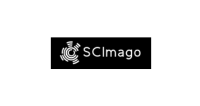PARASITIC INFESTATIONS AND INFECTIONS IN MARINE FISH (ACTINOPTERYGII: LUTJANIDAE AND MULLIDAE) MARKETED IN BRAZIL – AN ANIMAL AND HUMAN HEALTH ISSUE
DOI:
https://doi.org/10.5380/avs.v25i4.75537Palavras-chave:
anisakiasis, arthropods, coccidian, helminths, zoonosisResumo
The objective of this study was to identify the parasitic fauna, the impact of the parasite-host relationship and the potential risk of transmission of zoonotic parasites in fish marketed in the Metropolitan Region of Recife (Northeastern of Brazil). Ectoparasites and endoparasites were collected in Pseudupeneus maculatus (n=34), Lutjanus synagris (n=23), and Ocyurus chrysurus (n=20). Organs and/or tissues with and without parasites were processed by routine histological techniques. Overall, 43 (55.8%) specimens were parasitized by: Rocinela signata; Lernanthropus sp.; Lernaeolophus sultanus; Goussia sp.; Haliotrema sp.; Raphidascaris (Ichthyascaris) sp.; Cucullanus sp.; larvae of Pseudoterranova sp., Contracaecum sp., Anisakis sp., and Trypanorhyncha.
Macroscopic and/or histological alterations were associated with Lernantrhopus sp. (gills) and Pseudoterranova sp. (liver) in O. chrysurus; R. signata (gills) in P. maculatus; and Lernaeolophus sultanus (maxilla) of L. synagris. Histological analysis was shown to be a tool that provides important knowledge about the impact of the parasites on the health of studied marine fish. New records of parasites are presented (Lernanthropus sp. in O. chrysurus, Goussia sp. in P. maculatus, L. sultanus in L. synagris) and parasites of importance in Public Health are registered (Anisakis sp., Pseudoterranova sp., Contracaecum sp., and Trypanorhyncha), emphasizing the need for measures to avoid the risk of transmission to consumer. The information contributes to the knowledge
about the parasitic fauna of fish and its distribution along the coast of Brazil.
Downloads
Publicado
Como Citar
Edição
Seção
Licença
Autores que publicam nesta revista concordam com os seguintes termos:
- Autores mantém os direitos autorais e concedem à revista o direito de primeira publicação, com o trabalho simultaneamente licenciado sob a Creative Commons - Atribuição 4.0 Internacional que permite o compartilhamento do trabalho com reconhecimento da autoria e publicação inicial nesta revista.
- Autores têm autorização para assumir contratos adicionais separadamente, para distribuição não-exclusiva da versão do trabalho publicada nesta revista (ex.: publicar em repositório institucional ou como capítulo de livro), com reconhecimento de autoria e publicação inicial nesta revista.
- Autores têm permissão e são estimulados a publicar e distribuir seu trabalho online (ex.: em repositórios institucionais ou na sua página pessoal) a qualquer ponto antes ou durante o processo editorial, já que isso pode gerar alterações produtivas, bem como aumentar o impacto e a citação do trabalho publicado.













